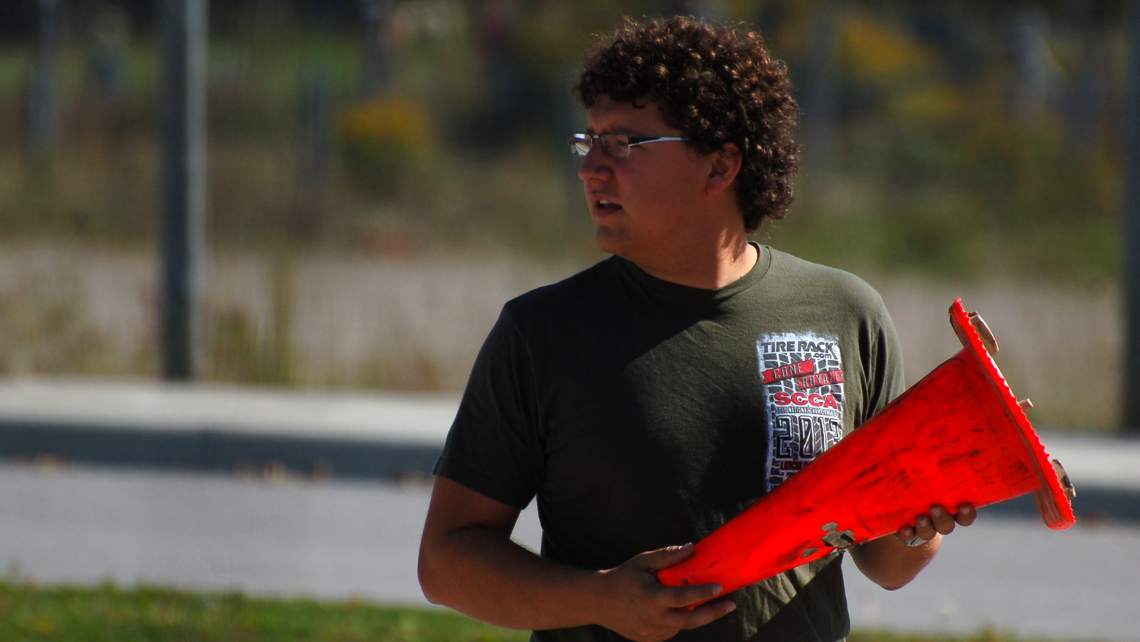Autoslalom events are held in larged paved areas - parking lots, racetrack paddocks, even the occasional airport runways!
The events start in the morning with registration and a course walk through for competitors to familiarize themselves with where this weekend's course goes. Every autoslalom event has a unique course laid out with cones which indicate the path the drivers must follow.
Once everyone is registered and have had a chance to learn the track, racing starts.
There are eighteen different classes that group vehicles based on drivetrains (engine size, front wheel drive, rear-wheel drive, all-wheel drive, etc.) and the level of modifications, if any, made to the car.
The specifics of each of these classes are spelled out in the Rules and Regulations, but the intention is to ensure that each vehicle will be competitive within its class.
Whether you have a fully tricked-out Camaro or a completely stock Honda Civic, there is an Autoslalom class for you.
No special vehicle preparation is required to compete. The only stipulation is that your vehicle must be roadworthy (although not necessarily licensed) and safe to drive. It must have working seatbelts, and the driver must wear an approved helmet at all times while on course; 'loaner' helmets are often available at the event to encourage newcomers to compete. Additionally, some events may require the vehicle to conform to an exhaust noise limit.
As noted above, almost any road-worthy car is eligible; however, before you attend your first event, it is important to understand how this motorsport discipline actually works.
You begin with a standing start, from the 'start box', and must complete the course by finishing up in the 'stop box'. As you launch, you break the beam of an electronic timer, and the clock starts ticking. Each course cone is specifically sited within a chalked box, and if you dislodge a cone you incur a time penalty. So, getting a 'clean' (no cones moved) run is the first imperative. Next is completing the course correctly. Many rookies get lost, and if you go 'off-course', your run is not scored.
As you approach the stop box you will again break the beam, and the clock will stop, but there is one more challenge. The stop box has a final cone located at the end of the stop box. If you take that one out, your run is again not scored. Fast, accurate driving is the most important element of Autoslalom competition, but learning and understanding your vehicles' dynamics is also important. As expected, everything depends upon the grip of your tires, so tire choices and tire pressures are understandably the first area of concern. You will see competitors using white shoe polish to mark their tires before going out. By examining these marks afterwards they can tell how far over onto the sidewalls the tire rolled during cornering, and adjust pressures accordingly.
Once the official timed runs are complete, if time permits at the end of the day, 'fun runs' may be available to practice and hone your skills without the competition.
The Ontario Regional Championship Series generally consists of several events, that run across Ontario between May and October. Sponsors (generally automotive-related) allow the organizers to provide prizes and contingency awards at both specific events, and as part of the over-all Championship.
If you want to learn more about your car's handling, improve your driving skills, or get involved in competitive motorsport, then Autoslalom is a great place to start. You don't need to make a big commitment of money or time, just come out and join the fun.
